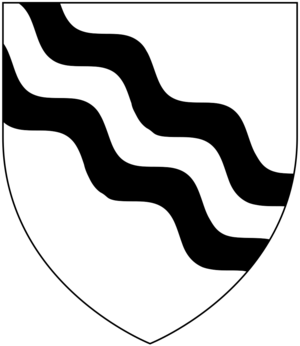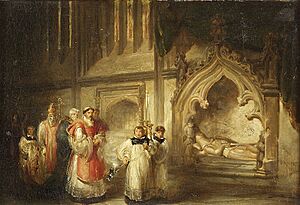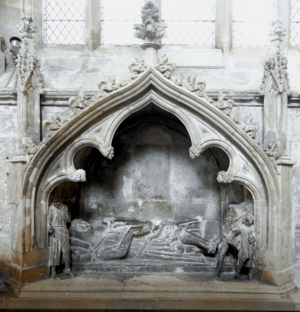Richard Stapledon facts for kids
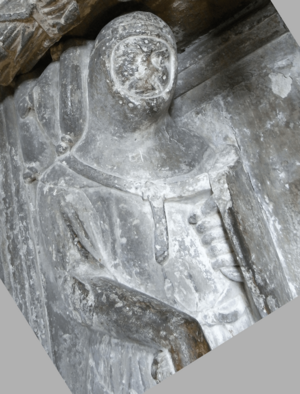
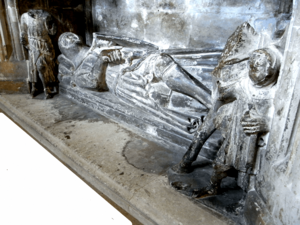
Sir Richard Stapledon (died 1326) was an important English judge and a political figure. He was the older brother of Walter Stapledon (who also died in 1326), who was the Bishop of Exeter. You can still see his statue and memorial in Exeter Cathedral today.
Contents
Who Was Richard Stapledon?
The Stapledon family were not super rich or famous, but they owned land. Their home was at a place called Stapledon in the area of Cookbury in Devon. Richard's parents were William and Mabel Stapledon. His younger brother was Walter Stapledon.
What Did Richard Stapledon Do?
Richard Stapledon was a lawyer and a judge. He worked as a Justice of Assizes for the western part of England. This meant he traveled to hear important court cases. Not many records about his work have survived over time.
In August 1315, his brother, the Bishop, visited Richard at his large house (called a manor house) in Stapledon. The Bishop came to officially open the church in Cookbury. Richard also got special permission from his brother to have a private chapel at his home. Many wealthy people in the Middle Ages liked to have their own chapels. The Stapledon family estate later became known as Annery.
Where Did Richard Stapledon Own Land?
Records from a court case in 1341/5 show that Richard Stapledon owned land in Devon. This lawsuit happened after his death, or maybe it was about a son who was alive then. The case was about a debt of £28 5 shillings owed to a man named Master Robert Hereward.
Richard owned land in several places, including:
- Huish in Fremington Hundred
- Parts of Stapledon and Cookbury in Black Torrington Hundred
- West Down in Braunton Hundred
- Broad Harford in South Molton Hundred
Milton Damerel Estate
Richard Stapledon was given the main lands of the manor of Milton Damerel. This gift came from Hugh Courtenay, 2nd Earl of Devon (1303–1377). Hugh Courtenay also has a statue in Exeter Cathedral. Milton Damerel later passed to the Hankford family, along with Annery.
Drannack Land and Church Rights
In 1311, Richard Stapledon received one acre of land in Drannack, near Gwinear in Cornwall. He also gained the right to choose the priest for St Winneri Church. This was approved by the powerful overlord Gilbert de Clare, 8th Earl of Gloucester.
In 1318, Richard gave these rights to the Diocese of Exeter. His brother, the Bishop, then used the income from these lands and church rights to help fund his new school, Stapleton Hall, in Oxford. This school later became Exeter College. The money helped pay for twelve scholarships for "poor but sober boys." Eight of these scholarships were for boys from Devon and four for boys from Cornwall.
Richard's Family
We don't have records about who Richard Stapledon married. However, it is known that his family line continued through his sons at Annery for two or three more generations. After that, there were no more male heirs. The estate then passed to his daughter and only heiress, Thomasine Stapledon. She married Sir Richard I Hankford, who was the son of Sir William Hankford (died 1422), a very important judge.
How Richard Stapledon Died
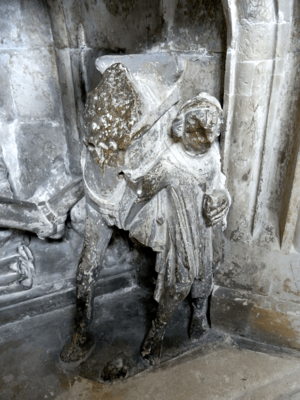
On October 14, 1326, Richard Stapledon was killed in the City of London. He was trying to save his brother, the Bishop, from an angry crowd. The crowd then killed the Bishop shortly after.
Here's what happened: Bishop Stapledon was seen as being on the side of King Edward II, who was not popular. When the King fled London from Queen Isabella's army, he made Bishop Stapledon the "Keeper" of the City of London. However, most people in London supported the Queen.
The Bishop knew the Queen would try to enter the City. He asked the Lord Mayor of London for the keys to the city gates so he could lock her out. When the people heard this, they "waited to surprise the bishop." He tried to escape the angry crowd by going into St Paul's Cathedral.
According to a historian named Prince, Sir Richard was with his brother at this time. He tried to save him from the mob. As they rode into the City towards St Paul's, through a gate called Cripplegate, a disabled person grabbed one of the front legs of Sir Richard's horse. This made the horse and rider fall to the ground. Then, Sir Richard was murdered by the crowd.
The Bishop reached St Paul's, but he wasn't safe there. The mob entered, dragged him out, and beat him. They then dragged him to the Great Cross at Cheapside, where they "most barbarously murdered him" on October 15, 1326. The Bishop was later given a proper burial in Exeter Cathedral, where his statue and memorial still stand.
A Latin poem by John Hooker (died 1601) used to be above the Bishop's monument. It described Sir Richard's murder:
- "He desired to help his brother, his brother being present;
- Swiftly the evil-minded people pressed forward to his brother;
- Who having been snatched, the people likewise caused his death;
- And exulted by this bloody, savage slaughter;
- Certainly he was a knight, strong and good;
- Of rare favor and accustomed to be present in a place of fury."
Richard Stapledon's Memorial in Exeter Cathedral
Sir Richard was also buried in Exeter Cathedral, close to his brother the Bishop. His tomb is against the north wall, across from the Bishop's tomb. His memorial is quite fancy. It has a curved space in the wall that holds his statue. The statue shows him as a knight with his legs crossed, which people thought meant he had been a crusader.
At the head of the statue, there is a small figure of a man. At the feet, there is a horse with an even smaller figure of a man holding its reins. Some people, like Prince, believed this part of the statue showed the disabled person who grabbed Sir Richard's horse at Cripplegate. This act caused him to fall into the hands of the angry mob.
However, it is more likely that these figures show a knight with his helpers. It could be a knight with his squire, a young helper called a page, and his horse.
The historian Sir William Pole (died 1635) said that the Stapledon family shield (silver, with two wavy black stripes) was on the statue's shield. Today, there is no color left on the shield. But these family arms can still be seen on his brother the Bishop's nearby memorial.


